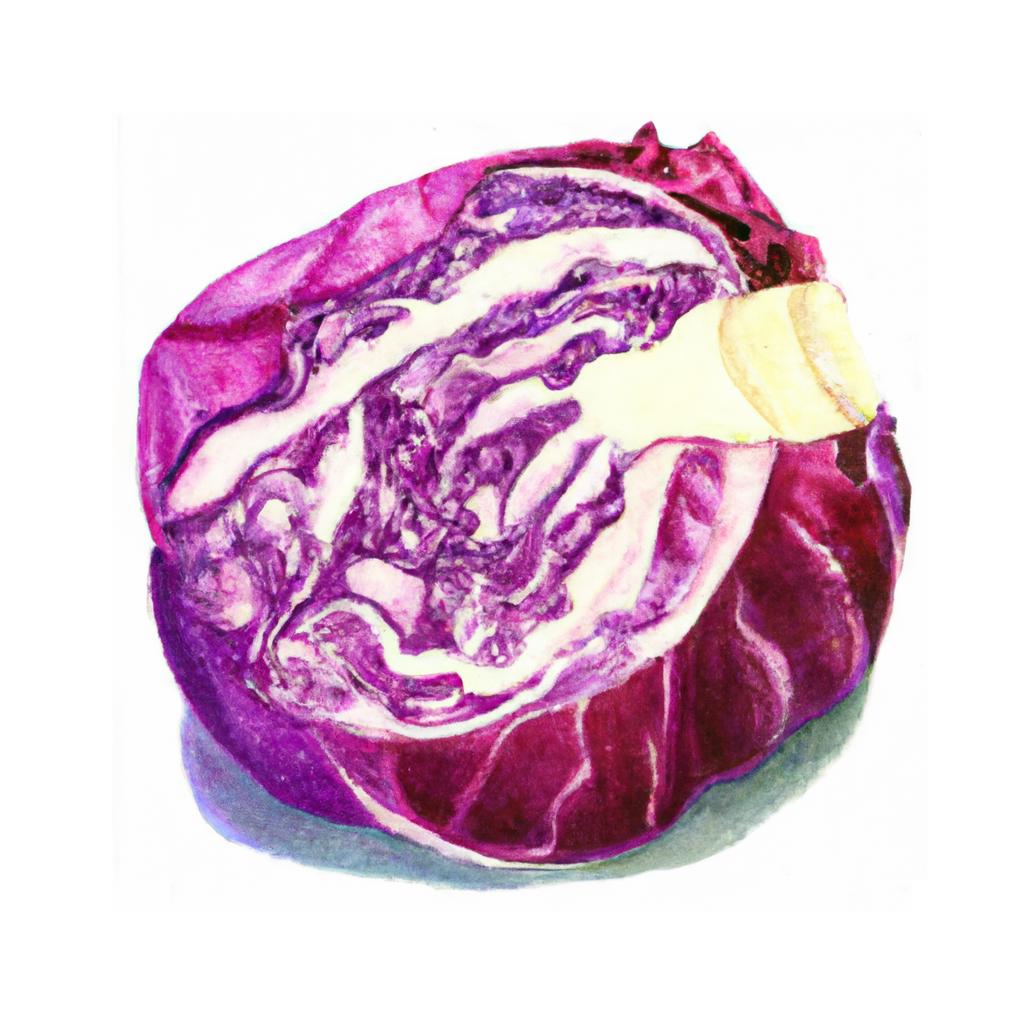
Red cabbage, scientifically known as Brassica oleracea var. capitata f. rubra, is a type of cabbage with vibrant purple-red leaves that forms a tight, round head. Native to the Mediterranean region, red cabbage has been cultivated for thousands of years, with evidence suggesting it was grown in ancient Egypt and Greece.
A highly nutritious vegetable, red cabbage is rich in vitamins C, K, and B6, as well as dietary fiber, minerals, and antioxidants. Anthocyanins, which give red cabbage its distinctive color, are plant pigments that have powerful anti-inflammatory and antioxidant properties, making this vegetable an excellent addition to a healthy diet.
Throughout history, red cabbage has been used both as a food source and in natural remedies. The ancient Greeks would wrap red cabbage leaves around wounds to promote healing, while medieval Europeans used red cabbage juice as a herbal treatment for stomach upsets and gout. In modern times, it is common practice to use red cabbage as a pH indicator due to the anthocyanin pigment's ability to change color according to the acidity or alkalinity of a solution.
Red cabbage can be eaten raw, making it a deliciously crunchy addition to salads, slaws, and wraps. Alternatively, it can be sautéed, braised, roasted, or fermented to create various dishes. One popular example is traditional German rotkohl, which is a sweet and tangy braised red cabbage dish cooked with apples, vinegar, and spices. This versatile vegetable pairs well with meats such as pork, poultry, and game, while its flavor is enhanced by ingredients like onions, garlic, citrus fruits, nuts, and soft cheeses.
This is advice is most applicable to growers in the UK, you may need to adjust the timings if you live somewhere with a different climate and/or seasons.
| Month | Tasks | Advice |
|---|---|---|
| January | - | - |
| February | sow indoors, | Start seeds indoors in a warm, well-lit area. Use seed compost and plant seeds 1/4 inch deep. Keep the soil moist. |
| March | sow indoors, | Continue to sow seeds indoors. Transplant seedlings to larger pots if needed, and keep soil moist. |
| April | harden off seedlings, plant out, | Begin hardening off indoor-grown seedlings by gradually exposing them to outdoor conditions. Plant hardened seedlings outdoors in well-draining soil. Space appropriately. |
| May | sow outdoors, thin seedlings, | Direct sow seeds outdoors in prepared soil, 1/4 inch deep. Thin seedlings to proper spacing as they grow. Water regularly. |
| June | water, weed, | Keep the soil consistently moist but not soggy. Remove weeds around the plants to reduce competition for nutrients and water. |
| July | water, weed, | Continue watering and weeding. Mulch around plants to conserve moisture and suppress weeds. |
| August | - | - |
| September | harvest, | Begin harvesting mature red cabbage heads when they feel firm to the touch. Cut the stem close to the head with a sharp knife. |
| October | harvest, | Continue harvesting mature red cabbage heads. Store them in a cool, dark place for use throughout the fall and winter months. |
| November | - | - |
| December | - | - |